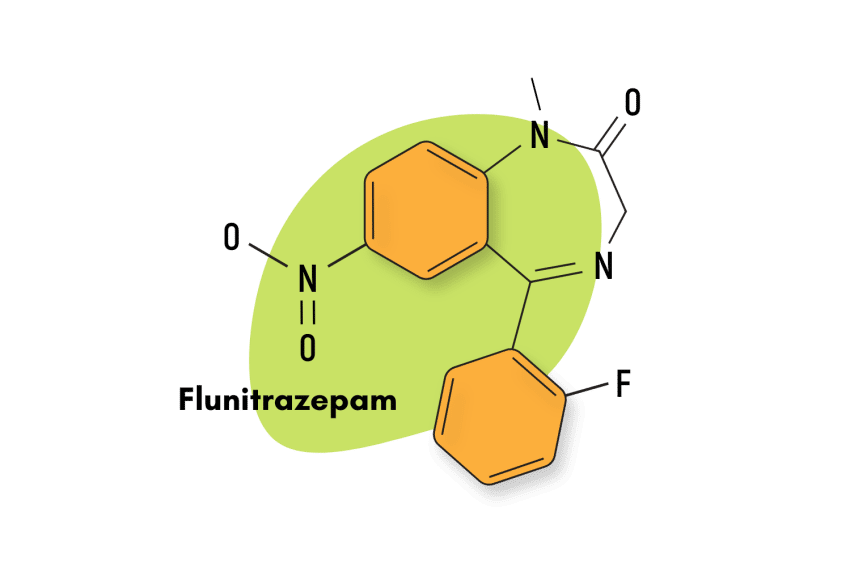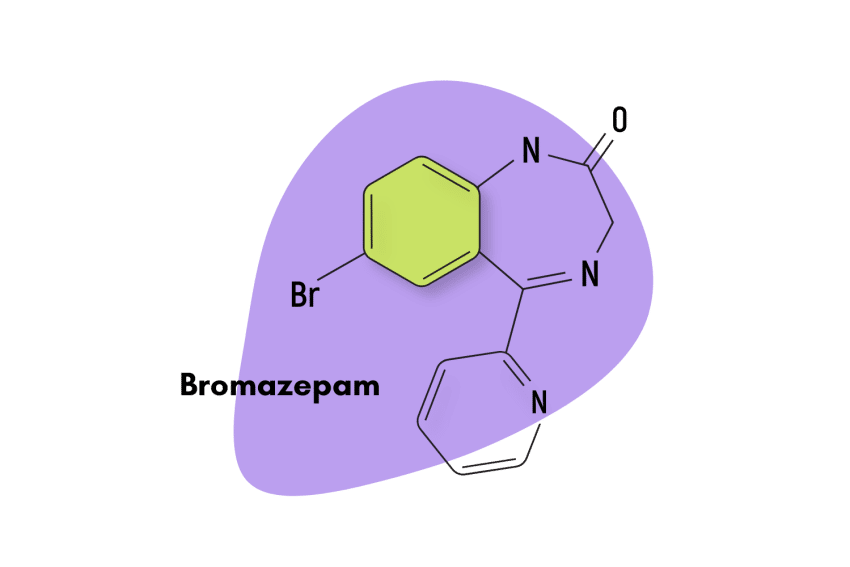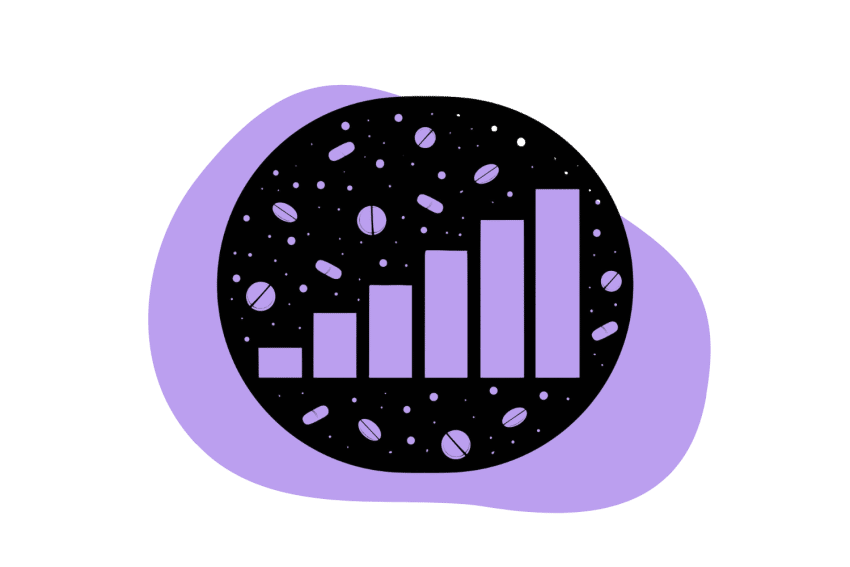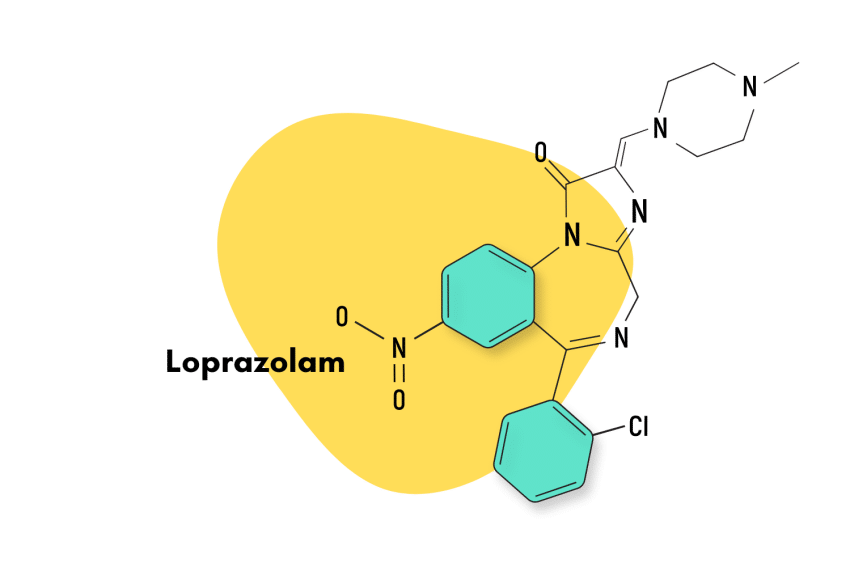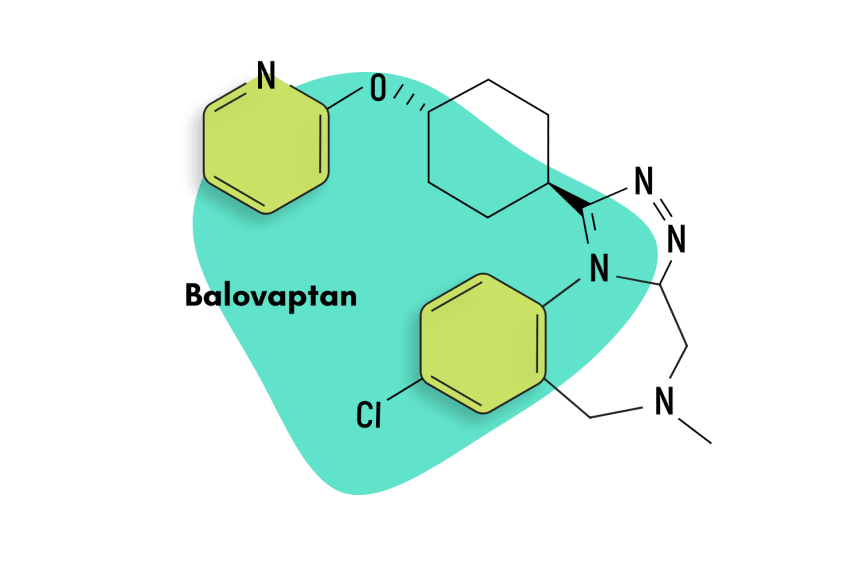Cyprazepam: Fact Sheet & Harm Reduction Guide
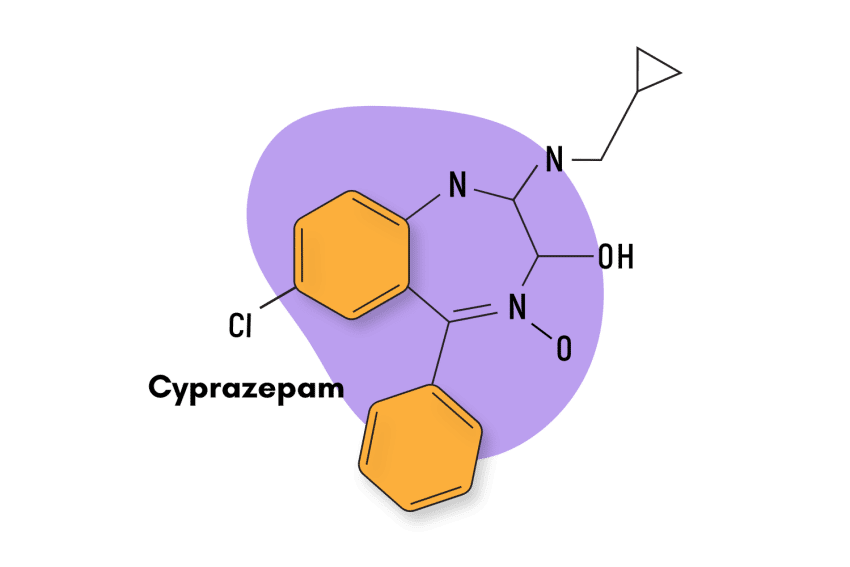
Cyprazepam is a benzodiazepine derivative used as a research chemical for its sedative-hypnotic and inebriating qualities.
The FDA has not approved this drug, nor has it been tested on humans.
Here, we’ll explore what we know about cyprazepam, including the estimated potency, effects, safety information, and some of the more well-known alternatives.
Cyprazepam Specs
| Status | Research Chemical |
| Common Dosage | Unknown |
| PubChem ID | 27452 |
| CAS# | 15687-07-7 |
IUPAC Name: 7-chloro-N-(cyclopropylmethyl)-4-hydroxy-5-phenyl-3H-1,4-benzodiazepin-2-imine
Other Names: N/A
Metabolism: Not studied
Duration of Effects: Unknown
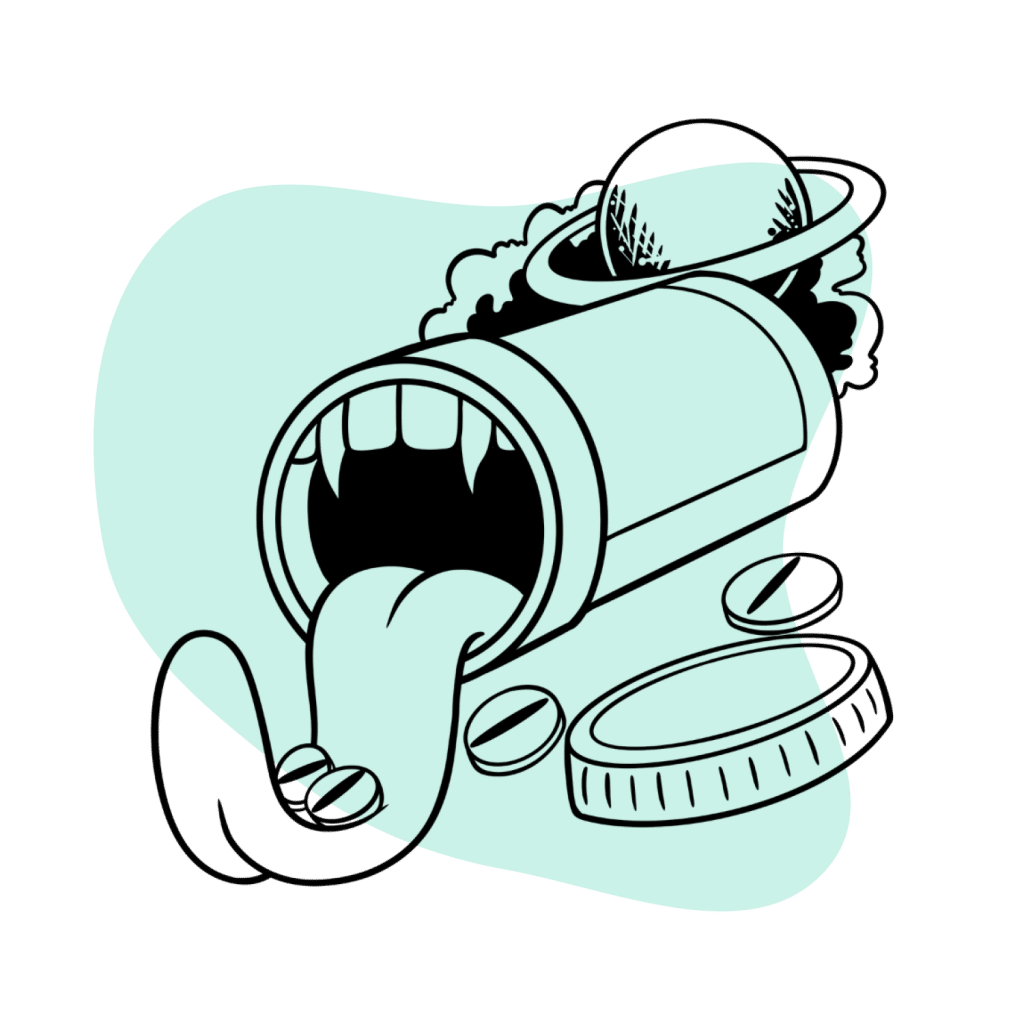
Benzodiazepine Dosage Equivalency Calculator
**Caution:** Benzodiazepines have a narrow therapeutic window. Dose equivalents may not be accurate in higher doses.
This calculator does not substitute for clinical experience and is meant to serve only as a reference for determining oral benzodiazepine equivalence.
Please consult a medical practitioner before taking benzodiazepines.
How Does Cyprazepam Work?
Cyprazepam works through the exact general mechanisms as all benzodiazepines. It binds and modulates the GABA-A receptors in the brain [1]. This produces a widespread dulling effect on the central nervous system. This has an anxiolytic, muscle-relaxant, and mild euphoric effect in moderate doses. In higher doses, GABAergics like cyprazepam induce sedation — causing users to feel an almost “drunk-like” effect and fall asleep.
Besides its utilization of the classic GABA pathway, we don’t know much about how cyprazepam exerts its effects. However, we can make some educated assumptions.
As a member of the 1,4-benzodiazepine subclass, cyprazepam likely has a higher affinity for sedative effects. From what little we know, this seems to check out. Additionally, 1,4-benzodiazepine derivatives tend to be longer-lasting than other subtypes.
Is Cyprazepam Safe? Risks & Side Effects
Cyprazepam has not been subject to testing for its toxicity or its side effects, so it’s unclear whether this substance can be considered safe or not.
However, due to the overlap of effect profile and chemical structure with other benzodiazepines, such as diazepam or chlordiazepoxide, cyprazepam is believed to share a similar safety profile to other benzodiazepine drugs.
This class is generally considered safe when used responsibly. This means using only the dose prescribed by your doctor, taking the medication for no more than two weeks, and avoiding mixing the drug with other medications or alcohol.
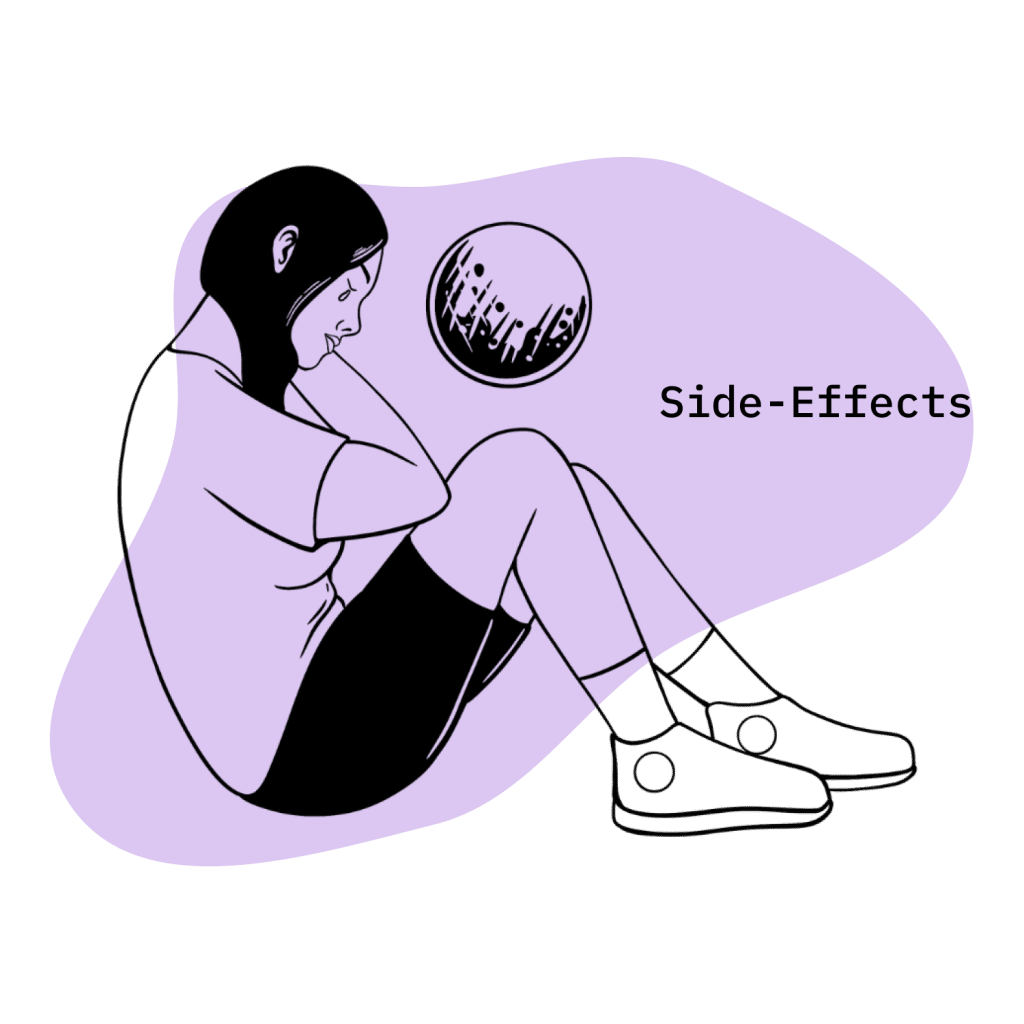
Side Effects of Cyprazepam
Due to the standard pharmacology of all non-atypical benzodiazepines, these compounds share a common set of side effects. There is still some variation between them, but it mainly relates to the severity and likelihood of the side effects and not the effects themselves.
Diazepam is considered the reference point to which all other benzos are compared and, in this sense, is the most “average” benzodiazepine. And, like cyprazepam, it is also a member of the 1,4-benzodiazepine subclass. Keeping in mind there’s bound to be some level of difference, we can still look at diazepam’s side effects and assume they’re comparable to those of cyprazepam.
According to the FDA, the following adverse effects have been identified with diazepam use:
- Antegrade amnesia
- Anxiety
- Blurred vision
- Changes in libido
- Changes in salivation
- Confusion
- Constipation
- Depression
- Diplopia
- Dizziness
- Dysarthria
- Elevated transaminases and alkaline phosphatase
- Gastrointestinal disturbances
- Hallucinations
- Headache
- Hypotension
- Incontinence
- Insomnia
- Irritability
- Nausea
- Skin reactions
- Slurred speech
- Tremors
- Urinary retention
- Vertigo

Benzodiazepine Withdrawal & Dependence
Benzodiazepines all exhibit the capability to produce physical dependence, as well as the associated withdrawal symptoms.
Physical dependence is the single most significant factor doctors have to control when prescribing a benzodiazepine treatment. To hedge against the likelihood of physical dependence, doctors try to minimize both the duration of treatment and the prescribed dosage.
A definitive review of the evidence recently suggested that benzodiazepine dependence is mainly influenced by the following four factors [2]:
- Daily benzodiazepine use for more than four months
- High dose (the higher the dose, the higher the dependence liability)
- Sudden cessation of benzodiazepine use
- Use of a short-acting benzodiazepine over a longer or intermediate-acting one
The possibility of developing a physical dependence is something that all potential benzodiazepine users must consider before they seek out treatment. Benzodiazepine withdrawals are known to be some of the hardest to deal with, and if they’re not treated properly, they can even be fatal.
Harm Reduction: Cyprazepam
Here are some tips and tricks for staying safe while using benzodiazepine drugs:
- 🥣 Don’t mix — Mixing benzodiazepines with other depressants (alcohol, GHB, phenibut, barbiturates, opiates) can be fatal.
- ⏳ Take frequent breaks or plan for a short treatment span — Benzodiazepines can form dependence quickly, so it’s important to stop using the drug periodically.
- 🥄 Always stick to the proper dose — The dosage of benzos can vary substantially. Some drugs require 20 or 30 mg; others can be fatal in doses as low as 3 mg.
- 💊 Be aware of contraindications — Benzodiazepines are significantly more dangerous in older people or those with certain medical conditions.
- 🧪 Test your drugs — If ordering benzos from unregistered vendors (online or street vendors), order a benzo test kit to ensure your pills contain what you think they do.
- 💉 Never snort or inject benzos — Not only does this provide no advantage, but it’s also extremely dangerous. Benzos should be taken orally.
- 🌧 Recognize the signs of addiction — Early warning signs are feeling like you’re not “yourself” without the drug or hiding your habits from loved ones.
- ⚖️ Understand the laws where you live — In most parts of the world, benzodiazepines are only considered legal if given a prescription by a medical doctor.
- 📞 Know where to go if you need help — Help is available for benzodiazepine addiction; you just have to ask for it. Look up “addiction hotline” for more information where you live. (USA: 1-800-662-4357; Canada: 1-866-585-0445; UK: 0300-999-1212).
Cyprazepam Drug Interactions
Drugs that exert a depressive effect on the central nervous system, like benzodiazepines, alcohol, barbiturates, and even natural alternatives like kratom and the kava plant, should never be mixed unless it’s with a doctor’s approval.
When other drugs that carry sedative or inhibitory effects are mixed with benzodiazepines, their effects can compound — leading to overdose and death.

Cyprazepam Contraindications
Just like their side effects, benzodiazepines all share a set of contraindications.
Contraindications refer to situations where the drug should be avoided at all costs. These conditions dramatically increase the risk of overdose or other health complications arising from benzodiazepine use.
Benzodiazepine contraindications include:
- Alcoholism
- Bronchitis
- Chronic obstructive pulmonary disease (COPD)
- Conjunctive use of barbiturates, opiates
- Lactation
- Major depression
- Myasthenia gravis
- Over the age of 65 (high risk)
- Personality disorders
- Pregnancy or lactation
- Sleep apnea
- Use of driving or heavy machinery
Similar Benzodiazepines
Without a formal study to examine the specific details of cyprazepam, it’s unclear which benzodiazepines are the most similar. With that said, as a 1,4-benzodiazepine, this substance is likely similar to drugs like diazepam (Valium), clonazepam (Klonopin), oxazepam (Serax), chlordiazepoxide (Librium), nordiazepam (Madar), phenazepam (Phenazepam), and quazepam (Doral).
In terms of effects, cyprazepam is likely similar to other popular drugs, such as alprazolam (Xanax), etizolam (Etilaam), bromazepam (Lectopam), bretazenil, and clorazepate (Tranxene).
Many people who take cyprazepam suggest it has a stronger sedative action than other recreational benzos. Other sedative benzodiazepines include triazolam (Halcion), flunitrazepam (Rohypnol), and lorazepam (Ativan).
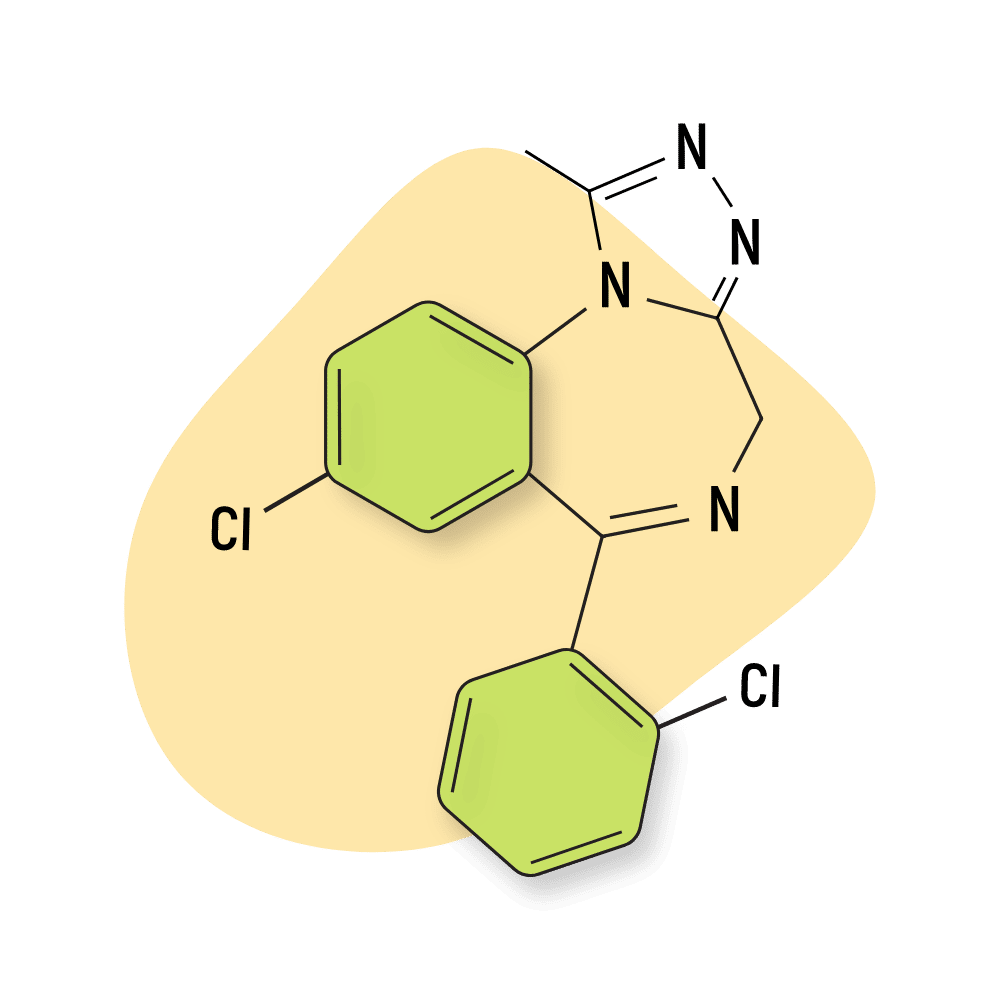
Natural Alternatives to Benzodiazepines
There are a few excellent herbal alternatives to benzodiazepines. None of these herbs will offer the same level of benefit as synthetic benzodiazepine drugs, but they may offer enough relief to avoid using this addictive class of drug in the first place.
The closest plant-based alternatives to benzodiazepines are kava (Piper methysticum), valerian (Valeriana officinalis), and chamomile (Matricaria chamomilla). Each of these herbs contains an array of compounds that interact with the GABA receptors similarly to benzodiazepines.
Another common herb many people turn to for the same effects as benzos is kratom (Mitragyna speciosa). This herb only has slight GABAergic properties but works through other neurotransmitters — including norepinephrine, dopamine, and serotonin. Kratom also has opiate-like effects — working to relieve pain and provide a powerful calming effect, not unlike benzodiazepines.
References
- Calcaterra, N. E., & Barrow, J. C. (2014). Classics in chemical neuroscience: diazepam (valium). ACS chemical neuroscience, 5(4), 253-260.
- Owen, R. T., & Tyrer, P. (1983). Benzodiazepine dependence. Drugs, 25(4), 385-398.

